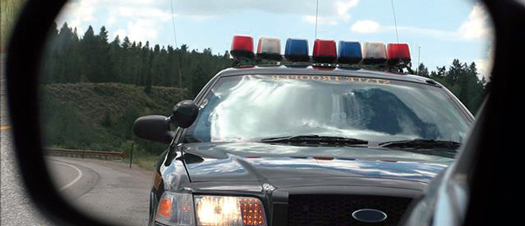Connecticut police still stopping minorities at high rates
By AP | Last updated: Oct 5, 2015 - 4:39:39 PMWhat's your opinion on this article?

Graphic: MGN Online
|
HARTFORD, Conn.—Police in Connecticut are still stopping Black and Hispanic drivers at disproportionately high rates, according to traffic stop data released recently.
Black drivers constitute 14.1 percent of drivers pulled over by police in all law enforcement agencies in the state from Oct. 1, 2014, through March 31, while 12.3 percent of drivers who were stopped were Hispanic, according to the data. About 8 percent of Connecticut’s population is Black and 9.7 percent is Hispanic, according to the U.S. Census Bureau.
The percentages of traffic stops of minorities were slightly higher than those from the same six-month period last year, when 13.7 percent of traffic stops involved Black drivers and 12.0 percent involved Hispanic drivers.
Police also were more likely to search the cars of Black and Hispanic drivers than those of Whites. Six percent of Black drivers and 6 percent of Hispanic drivers who were pulled over saw their vehicles searched, compared with 3 percent of Whites.
The data also appears to show little or no racial disparities in driver arrests. One percent of Black drivers stopped and 2 percent of Hispanic drivers pulled over were arrested, compared with 1 percent of White drivers.
Data experts at Central Connecticut State University have been compiling and analyzing the information that began being collected in October 2013 under a revamped version of the state’s 1999 anti-racial profiling law. Police officers in Connecticut are required to fill out forms containing information about each traffic stop.
The first comprehensive analysis of the traffic stop data, released in April, found that 16 of the more than 100 law enforcement agencies in the state pulled over minority motorists at significantly higher rates and warranted additional investigation and monitoring.
Those departments were Groton town police, state police troops C in Tolland and H in Hartford and police departments in East Hartford, Granby, Hamden, Manchester, Meriden, New Britain, New Haven, Newington, Norwich, Stratford, Waterbury, Wethersfield and Windsor. The additional investigation and monitoring are ongoing, officials said.
Police chiefs in several of those towns said Sept. 22 they were reviewing the new data, but noted that training and other improvements have been implemented since the analysis of the first year of data was released.
Police and state officials cautioned against coming to any conclusions about the new data before it can be analyzed.
Michael Lawlor, the state undersecretary for criminal justice policy and planning, said the data is a tool to help legislators and police departments decide if improvements are needed, not an indictment of any department.
Mr. Lawlor noted the new numbers are from the six months before the first data analysis was released in April. He believes the data collected after April will be a better indication of how police are responding to the concerns listed in the first report.
“It’s pretty clear that there’s a disparity,” he said, referring to the percentages of minorities being stopped by police. “It’s pretty clear there are disparities throughout the criminal justice system. Why that is is the open question, and what can be done about it is the next question.” (AP)
INSIDE STORIES AND REVIEWS
-
-
About Harriett ... and the Negro Hollywood Road Show
By Rabiah Muhammad, Guest Columnist » Full Story -
Skepticism greets Jay-Z, NFL talk of inspiring change
By Bryan 18X Crawford and Richard B. Muhammad The Final Call Newspaper @TheFinalCall » Full Story -
The painful problem of Black girls and suicide
By Charlene Muhammad -National Correspondent- » Full Story -
Exploitation of Innocence - Report: Perceptions, policies hurting Black girls
By Charlene Muhammad -National Correspondent- » Full Story -
Big Ballin: Big ideas fuel a father’s Big Baller Brand and brash business sense
By Bryan Crawford -Contributing Writer- » Full Story






 Click Here Stay Connected!
Click Here Stay Connected!








